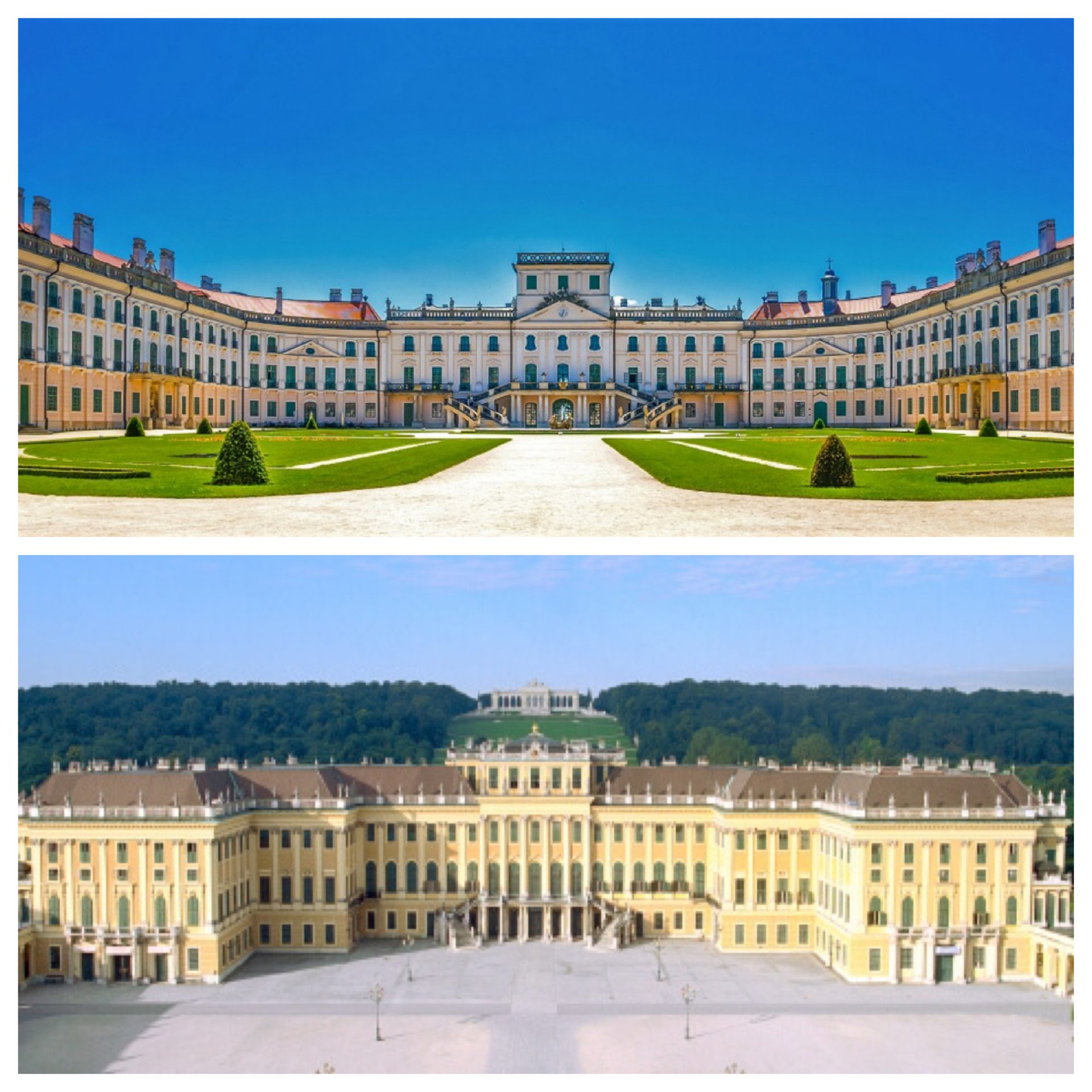Experience Travel Insights
An Immersive Schönbrunn: How to Unlock Its Living Story
by Long Lin-Maurer • September 23, 2025

An Immersive Schönbrunn Experience: Beyond the Grand Tour, A Living History
To stand before Schönbrunn Palace is to face the very heart of the Habsburg dynasty. Its iconic Maria Theresa yellow façade, stretching wide under the Viennese sky, is one of Europe’s most recognizable images. For many visitors, a tour of the palace is a whirlwind of Rococo gold leaf, polished parquet floors, and a recitation of imperial names and dates. But to treat Schönbrunn as a mere museum is to miss its soul. This sprawling estate is not a static monument; it is the setting for an all-encompassing Schönbrunn exploration, a layered narrative of power, love, science, and sorrow. To truly understand Vienna, one must learn to read the language of its most famous residence, embarking on an in-depth Schönbrunn tour that goes far beyond the surface.
A Captivating Schönbrunn Experience: The Palace as a Human Stage
The standard tour route ushers you through magnificent State Rooms, but without context, they are simply beautiful, empty shells. The true magic lies in re-populating these spaces with the ghosts of their inhabitants, understanding them not as historical figures, but as people who lived and struggled within these gilded walls.
Come and experience travel!
Personally designed, seamlessly delivered – your journey, our expertise!
We are a boutique travel agency and consultancy specializing in Hub & Spoke Tours across Central Europe, the Benelux and the Dolomites.
Consider the formidable Empress Maria Theresa, the true architect of Schönbrunn. Her presence is everywhere in the Maria Theresa apartments. In the Walnut Room, one can picture her conducting affairs of state, a pragmatic sovereign balancing a vast empire with her sixteen children. Steps away, the Millions Room, an explosion of priceless miniatures, reveals the dual nature of her reign: shrewd politics and extravagant power projection. This is a key part of any comprehensive Schönbrunn guide to the palace’s history.
A century later, these halls echoed with the more melancholic story of Emperor Franz Joseph and Empress Elisabeth, ‘Sisi’. A walk through their private lives feels like a dedicated Empress Sisi tour. The Emperor’s apartments are famously spartan, reflecting his rigid devotion to duty. In stark contrast, Sisi’s rooms were her sanctuary and her cage, where she installed gymnastic equipment—a shocking eccentricity. Walking from his study to her spaces, one feels the profound emotional distance between the couple, a silent drama of the Habsburg dynasty played out in décor. The palace becomes a stage for one of history’s most poignant imperial love stories.
The Schönbrunn Gardens: A World Beyond the Imperial Walls
The true scale of Schönbrunn becomes apparent only when you step into the vast Schönbrunn Gardens. This is where the checklist tourist often falters, yet the gardens are an integral part of the imperial narrative. Planned in the French Baroque style, they represent humanity’s power over nature—a perfect metaphor for absolute monarchy.
Strolling towards the Neptune Fountain, you are walking in the footsteps of emperors. But the real joy lies in discovering the hidden gems of Schönbrunn. To the west, you find the Roman Ruin, an artificial folly built not as a relic, but as a piece of landscape philosophy, evoking the cyclical nature of empires. It’s these small discoveries that make for a truly profound Schönbrunn discovery.
Climbing the gentle hill to the Gloriette, the magnificent arcaded structure that crowns the estate, is a pilgrimage. From this vantage point on Gloriette Hill, the entire design clicks into place. You see the palace as the heart of a complex organism. The Gloriette itself was a monument to “just war,” a tribute to those who had secured Maria Theresa’s throne. To sit here with a coffee, gazing down at the city, is to share the very perspective of the emperors, a moment of quiet contemplation that enriches your understanding of Vienna imperial history.
Schönbrunn Deep-Dive: Unlocking the Hidden Imperial Collections
For a truly behind-the-scenes Schönbrunn perspective, explore the smaller, often-overlooked buildings. The Imperial Carriage Museum Vienna, the Wagenburg, is perhaps Schönbrunn’s greatest hidden treasure. Housed in the former winter riding school, it is a visual chronicle of an emperor’s life, from cradle to grave. You see tiny carriages of young archdukes, magnificent coronation coaches, and the stark, black funeral hearse. Each vehicle is a work of art, telling a story of ceremony and representation.
Come and experience travel!
We design bespoke travel experiences with a perfect balance of cultural depth, efficiency and comfort.
Specializing in seamless hub-and-spoke journeys, we create well-paced, immersive itineraries tailored to your interests.
Elsewhere, the Schönbrunn Palm House and the Desert House speak to a different imperial interest: the scientific exploration of the natural world. The Palm House, a stunning structure of glass and iron, was a marvel of 19th-century engineering, housing exotic plants from around the globe. It was a living library of botany, a symbol of an empire demonstrating mastery over not just people, but the natural world itself.
Crafting Your Experiential Schönbrunn Visit: Pace and Perspective
How, then, does one transform a visit from a simple tour into a truly immersive Schönbrunn experience? The secret lies not in seeing more, but in seeing differently. It requires abandoning the checklist and embracing a more deliberate pace. This is how you create an engaging Schönbrunn Palace tour for yourself.
An interactive Schönbrunn visit begins before the crowds descend, perhaps with a quiet morning walk through the gardens. It means focusing on a theme—perhaps tracing Sisi’s life or following the palace’s architectural evolution. It also means engaging all the senses. This multi-sensory Schönbrunn journey includes the sound of gravel underfoot, the scent of blooming wisteria, and the coolness of marble in the Great Gallery. It is pausing for lunch at a café within the grounds, allowing time for reflection. By curating the experience and moving with intention, the palace ceases to be an overwhelming list of sights and becomes a story that unfolds at a human pace. Schönbrunn is not a destination to be conquered, but a world to be inhabited, even if just for a day.
Exploring Immersive Schönbrunn: A Cultural and Historical Perspective
- ORF.at – Digitalisierung des Kulturerbes: Schönbrunn als Vorreiter: An article from Austria’s national broadcaster discussing the broader trend of digitalizing cultural heritage, with specific mention of initiatives at Schönbrunn Palace to enhance visitor engagement.
- University of Vienna – Research on VR in Heritage Interpretation: An academic overview from the University of Vienna’s digital humanities department on the application of virtual reality for enhancing understanding of historical sites, relevant to Schönbrunn’s context.
- Schönbrunn Palace Official Site – Digital Education Initiatives: A section from the official Schönbrunn Palace website detailing its non-commercial digital tools and educational programs aimed at broadening access to its history and collections.
- Bundesdenkmalamt – Digital Strategies in Monument Preservation: A publication by the Federal Monuments Office of Austria exploring the use of modern digital technologies for the documentation, preservation, and interpretation of national heritage, including sites like Schönbrunn.
- Der Standard – Cultural Mediation: Digital Worlds in Austria’s Palaces: A reputable Austrian newspaper’s analysis of how digital and immersive technologies are transforming cultural mediation at major Austrian historical sites, drawing examples from Schönbrunn.
- ICOM Austria – Virtual and Augmented Reality in Austrian Museums: Insights from the International Council of Museums (ICOM) Austria on the trends, challenges, and opportunities of integrating virtual and augmented reality into museum and palace visitor experiences.
- TU Wien – Digital Heritage Reconstruction Projects: A project description from the Vienna University of Technology (TU Wien) on advanced 3D modeling and reconstruction techniques used to digitally preserve and present complex historical architectures, applicable to Schönbrunn.
- Europeana Blog – Immersive Heritage Experiences in Vienna: A post from Europeana, Europe’s digital platform for cultural heritage, discussing innovative immersive approaches adopted by cultural institutions in Vienna, potentially featuring Schönbrunn.
- Wissenschaft.at – Digital Time Travel: Austria’s History Online: A scientific news portal’s feature on how digital technologies enable “time travel” experiences for understanding Austrian history and cultural sites, including palace environments like Schönbrunn.
- Austrian Academy of Sciences – Digital Humanities Project Schönbrunn: An overview of a potential research project by the Austrian Academy of Sciences focused on digital humanities applications and extensive digital archival work related to Schönbrunn Palace.
